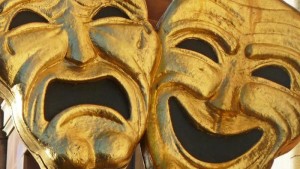Dynamics in music is about expression — loud, soft, warm, cool, wispy, gutsy. In classical music dynamics are often marked on paper — crescendo, pianissimo, forte, mezzoforte, accents. They give us a good sense of what the composer wanted, or what the editor suggests. In classical music, it’s important to know how to honor those ideas and do them justice. In fiddle music, the same kinds of expression come from the heart and make the tunes really worth listening to.

How do we include dynamics in our playing? Are they like clicks on a volume-control knob? Do we play at a particular volume until a new symbol appears? Do you treat expression as a higher level technique, something that is only added once more fundamental techniques are mastered? Or do you regard expression as fundamental?
These questions struck me suddenly one time when I was judging a high-level fiddle competition.
Of the two top competitors, one was primarily a classical violinist and the other a fiddler. Both were excellent players, but one big difference stood out between them. The classical player played her tunes exactly the same way both times through them, with the same dynamic changes. The fiddler played her tunes differently the second time through, and partly because of this, she came across as more heartfelt.
It occurred to me then that for some musicians, expression is just another part of their technique. They learn how to play a piece and then perform it that same way each time. By contrast, others, like the second fiddler in that competition, approach music differently. They tell a story with their music. Once they play a tune the first time, they can’t start over and play it the same way again.
Very early on as I work with students, I like to encourage them to imagine their music as the soundtrack to a movie of their choosing. It could be a silly movie, or a story of something that happened to them that day, or something they wished would happen.When they have to repeat some music, they won’t play it the same way–they won’t want to. The story plot has progressed, something has already happened, and something new is about to happen.
Regardless of what the “movie” is about, it will inform their playing, and take their music beyond the mere notes. It’s also interesting to have them play the same music for very different story lines, and see what it does to the music.
If you draw a blank when you try to add expressive ideas, or if you can’t think of a movie to play for, at least set up some arbitrary rules just to explore ideas you haven’t thought of before. For example, start and end the A part of a tune so quietly you can hardly hear it, but at some point in the middle, play so loudly you can’t play any louder. Try it a few times, and then reverse it, starting and ending loud, and finding a very quiet spot in the middle. You might actually like some of the ideas you hear while doing this. If so, keep them, try them again, see if they make you explore new ideas, or if they spark the feeling of a progression in the music, as in a movie or story, that goes beyond just trying to play the notes.
This is not something to save for later, after you have the tune down! It’s not just icing on the cake. Expression, a story, a plot, a twist — these will end up being exactly what makes you and your listeners enjoy the tune, and will be the best motivation for learning to play it well.
©2016 Ed Pearlman
Very good advice, Ed. This can pply to allo types of tunes, but I think it is crucial when playing slow airs. Thank you for helping me focus on this.